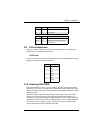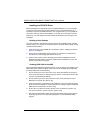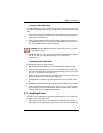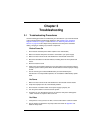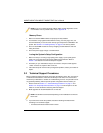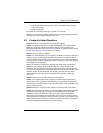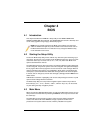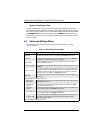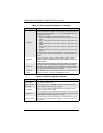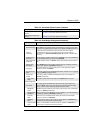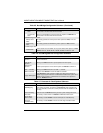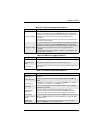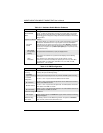
4-1
Chapter 4
BIOS
4-1 Introduction
This chapter describes the AMIBIOS™ Setup utility for the H8DMT/H8DMT-IBX/
H8DMT-F/H8DMT-IBXF Serverboards. The AMI ROM BIOS is stored in a flash chip and
can be easily upgraded using a floppy disk-based program.
4-2 Starting the Setup Utility
To enter the BIOS Setup Utility, hit the <Delete> key while the system is booting-up. (In
most cases, the <D
ELETE> key is used to invoke the BIOS setup screen. There are a few
cases when other keys are used, such as <F1>, <F2>, etc.) Each main BIOS menu
option is described in this manual.
The Main BIOS screen has two main frames. The left frame displays all the options that
can be configured. “Grayed-out” options cannot be configured. The right frame displays
the key legend. Above the key legend is an area reserved for a text message. When an
option is selected in the left frame, it is highlighted in white. Often a text message will
accompany it. (Note that BIOS has default text messages built in. We retain the option
to include, omit, or change any of these text messages.) Settings printed in Bold are the
default values.
A indicates a submenu. Highlighting such an item and pressing the <E
NTER> key will
open the list of settings within that submenu.
The BIOS setup utility uses a key-based navigation system called hot keys. Most of
these hot keys (<F1>, <F10>, <E
NTER>, <ESC>, <ARROW> keys, etc.) can be used at
any time during the setup navigation process.
4-3 Main Menu
When you first enter AMI BIOS Setup Utility, you will see the MAIN MENU screen.You can
always return to the Main Menu by selecting the Main tab on the top of the screen with
the arrow keys.
The M
AIN MENU screen provides you with a system overview, which includes the
version, built date and ID of the AMIBIOS, the type, speed and number of the
processors in the system and the amount of memory installed in the system.
NOTE: Due to periodic changes to the BIOS, some settings may have been
added or deleted and might not yet be recorded in this manual. Please refer to
the Manual Download area of our web site for any changes to BIOS that may
not be reflected in this manual.



